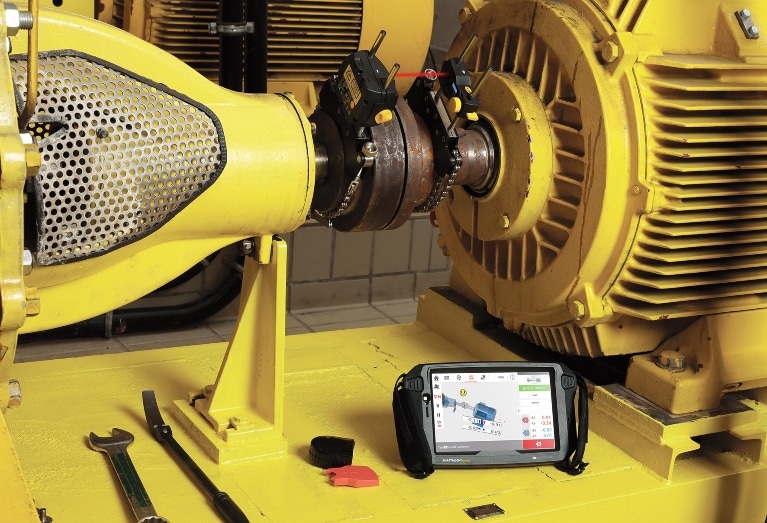Machinery alignment scenarios are rarely the same. Using an easy shaft alignment tool that works for some simple jobs can introduce new errors on more complex projects. This unnecessarily complicates the alignment process, frustrating technicians, and driving up operational costs. Frequently, what maintenance leaders save with a cheaper system they lose in manual efforts and rework.
Enter adaptive alignment, a signature feature of PRUFTECHNIK laser shaft alignment systems.
This combination of software and hardware innovations enables maintenance teams to address any shaft alignment task, from the standard, daily, and straightforward alignment jobs to more complex and challenging tasks – such as aligning Cardan shafts, vertical flanged machines with right-angle gearboxes, or extensive machine trains with gearboxes.
Adaptive alignment systems contain Active Situational Intelligence (ASI), a software innovation with capabilities that enable the solutions to take on from the standard to complex and challenging tasks and complete them faster and with more accuracy than the many more basic solutions on the market.
Here are some of the adaptive alignment enhancements:
Multi-Factor Quality Enhancement
With this feature, the software detects and compensates for many factors that might negatively influence a measurement. It provides technicians with immediate feedback and allows even less experienced technicians to fetch high-quality measurements just by following the steps and tips displayed on the screen.
Uncoupled Shaft Awareness
When installing machines, the alignment should begin with uncoupled shafts to remove any residual forces in the machine train. But basic systems don’t have optimized measurement procedures for uncoupled shafts. Technicians must manually hold shafts to make sure both are at the same relative angle, then manually take the point, then manually move them. This method dramatically increases the risk of errors.
With adaptive alignment, uncoupled shafts can be in any position—the laser only needs to hit the detector. During the measurement, shafts can be freely moving while the adaptive system works out the angles and obtains the measurement. This capability delivers high ROI when teams are installing an asset because you get accurate results and required machine movements in the fastest possible time.
Virtual Move Simulator
Moving the machine is often the costliest part of alignment—and carries with it the risk of additional cost and time if it turns out to be the wrong move. Virtual Move Simulator (VMS) has saved technicians thousands of hours across many industries around the world by enabling them to model different options for a move, see the results, and refine choices before actually doing the physical movement. Read this separate blog post for more on VMS.
Live Move
Single-laser technology delivers rapid completion of alignment tasks while improving precision. Systems outfitted with this technology let technicians see corrections in real-time. They can view updated live results in both vertical and horizontal planes simultaneously across the full range of the sensor detection surfaces. With this capability, you avoid the limitations inherent to non-adaptive, dual-laser systems that have a line-over-length divergence problem.
Adaptive alignment can save time, improve accuracy, and offer numerous other advantages. Learn more about the adaptive alignment concept and feature set in PRUFTECHNIK systems by visiting our website.

